Telecentric Design Topics
Authors: Gregory Hollows, Nicholas James
This is Section 4.4 of the Imaging Resource Guide.
In previous sections, the lenses discussed have been divided into two different categories: telecentric lenses and non-telecentric lenses. However, there are two types of telecentricity: object space and image space telecentricity (which refer to the entrance pupil and exit pupil locations, respectively). The pupils of an optical system are images of the aperture stop; typically, machine vision lenses have embedded aperture stops, with individual lens components surrounding it on either side. The entrance pupil is the image of the aperture stop into object space, and the exit pupil is the image of the aperture stop into image space. See Figure 1 for illustrations of entrance and exit pupils for a non-telecentric lens.

Figure 1: A machine vision lens with entrance and exit pupils located within the lens, which is typical of most fixed focal length lenses.
Object Space Telecentricity
When a machine vision lens is described as simply being telecentric, it is most likely object space telecentric. A lens is said to be object space telecentric when the entrance pupil is located at infinity in image space (everything behind the objective), as shown in Figure 2. In an optical design, object space telecentricity is accomplished by placing the aperture stop of the system at the focal point of the front group. The entrance pupil at infinity explains why the field of view (FOV) is constant and non-angular. Since the chief ray, which defines the FOV of a system, crosses the optical axis at the aperture stop and crosses at the entrance pupil, the ray will be parallel to the optical axis when the pupil is at infinity, and the angular field of view (AFOV) is zero (Figure 3). By contrast, any entrance pupil located a finite distance away from the lens will result in a non-parallel chief ray, as shown traced in Figure 4 for a non-telecentric lens.
Lenses that are only object space telecentric can be focusable since the back half of the lens can be designed with moving elements, which is advantageous for systems that need the variability of working distance (WD). They can also be designed to be variable magnification lenses, as the rear elements can be used to control magnification, or the sensor plane can be moved for small magnification shifts. Object space-only telecentric lenses are more easily capable of hitting larger image sensor formats, even in more compact form factors, as the rays in image space can diverge; the back of the lens, therefore, does not need to exceed the sensor dimensions.

Figure 2: A lens which is object space telecentric, with the entrance pupil projected to image-side infinity.

Figure 3: An object space telecentric lens where the chief rays are all parallel to the optical axis in object space. Note that the FOV does not change regardless of where the object plane is positioned, as the chief rays defining the FOV are all parallel to the optical axis.

Figure 4: The entrance pupil’s location is where the object space chief ray crosses the optical axis, as shown with a non-telecentric lens.
Image Space Telecentricity
As object space telecentricity is defined by the position in object space of the entrance pupil, image space telecentricity can be defined by the exit pupil being located at infinity in image space. This is shown in Figure 5. Much in the same way that the magnification of an object will not change if a lens is object space telecentric, when a lens is image space telecentric the magnification will not change with respect to the placement of the sensor plane, as shown in Figure 6. This means that sensor placement tolerance for cameras is not as important with image space telecentric lenses, as small shifts toward or away from the optimal position will not cause differences in magnification between two systems with identical lenses.
Additionally, image space telecentric lenses do not suffer from radiometric cos4θ roll-off (see Relative Illumination, Roll Off and Vignetting for more details) since the rays land perpendicular to the sensor across its entire area. This is advantageous because it allows the image to have a more even relative illumination profile assuming selective vignetting has not been built into the lens design.

Figure 5: A lens that is image space telecentric with the exit pupil projected to image space infinity (which is mathematically equivalent to object space infinity).

Figure 6: An image-space telecentric lens, where the chief rays are all parallel to the optical axis in image space. Note that the image height does not change regardless of where the sensor plane is positioned, as the chief rays defining image height are all parallel to the optical axis.
Double Telecentricity
While object space telecentricity provides a substantial boost to gauging accuracy over conventional lenses, even greater accuracy can be achieved if a lens is both object and image space telecentric (doubly telecentric). The same principles of image and object space telecentricity hold true; in a doubly telecentric lens, both the entrance and exit pupils are projected to their respective infinities, as shown in Figure 7. Doubly telecentric lenses are the most accurate type of telecentric lens, as the FOV is completely unaffected to change caused by shifts of the object position or the sensor position, nor do they suffer from any cos4θ roll-off.
Figure 8 shows a plot comparing three different lenses - a fixed focal length lens, an object space only telecentric lens, and a doubly telecentric lens - with the x-axis representing the change in WD (in mm) from nominal and the y-axis representing the dimensional error as a percentage from the actual value. As is shown in the plot, the doubly telecentric lens is the most accurate of the group, with less than 0.2% error throughout a 4mm shift in WD. Doubly telecentric lenses should be used in applications requiring the highest accuracy and precision.

Figure 7: A doubly telecentric lens, with the entrance and exit pupils projected to image and object space infinity, respectively.














 Previous Section
Previous Section 
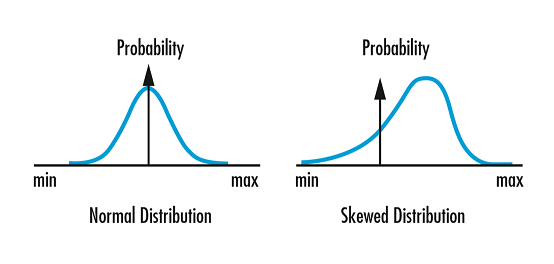
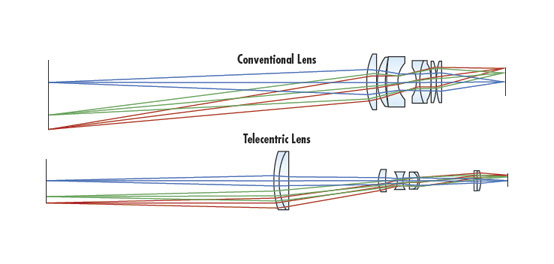
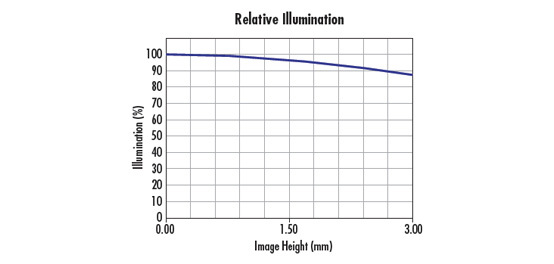
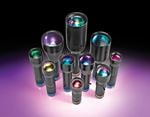

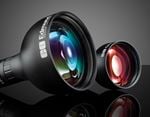
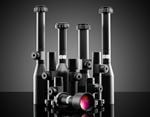

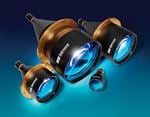
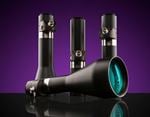
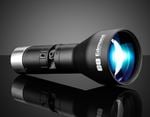
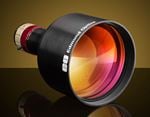
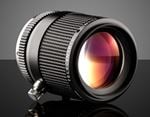
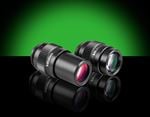
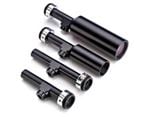
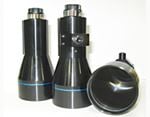
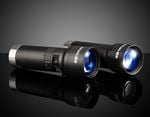
or view regional numbers
QUOTE TOOL
enter stock numbers to begin
Copyright 2023 | Edmund Optics, Ltd Unit 1, Opus Avenue, Nether Poppleton, York, YO26 6BL, UK
California Consumer Privacy Acts (CCPA): Do Not Sell or Share My Personal Information
California Transparency in Supply Chains Act